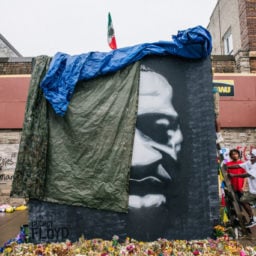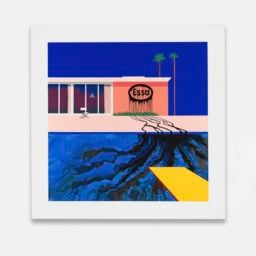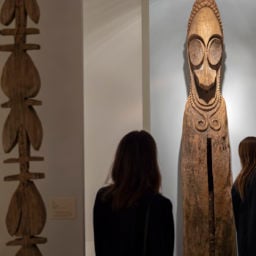As the art industry continues to feel the pressure of the global health situation and the fallout from the lockdown, local scenes have gained a renewed sense of relevance as gallerists, artists, and collectors remain in place and avoid international travel.
But for dealer Xavier Hufkens, investing in Brussels has been an ongoing project for 33 years. Despite being a mainstay at international art fairs, his eminent gallery, which represents artists including Nicolas Party, Cathy Wilkes, and Danh Võ, has always called Belgium home.
Hufkens—who already has two large spaces in the city on its winding and resplendent streets—is now opening his third Brussels space on June 18 with an exhibition by Sterling Ruby. The revamped 3,700-square-foot gallery is in a 1960s modernist building replete with a backyard garden. (In 2021, Hufkens is opening another project space, about which he has not yet released details.)
“When you come to Xavier Hufkens, I want to be there,” he tells Artnet News. (He is not the only European dealer doubling down on his current city: Eva Presenhuber opened her third space in Zurich this month, and in May, Berlin dealer Max Hetzler got his third space in the city.)
We spoke with Hufkens about the recent rise of online viewing rooms, the importance of brick-and-mortar spaces, and why he’s so devoted to the Belgian capital.
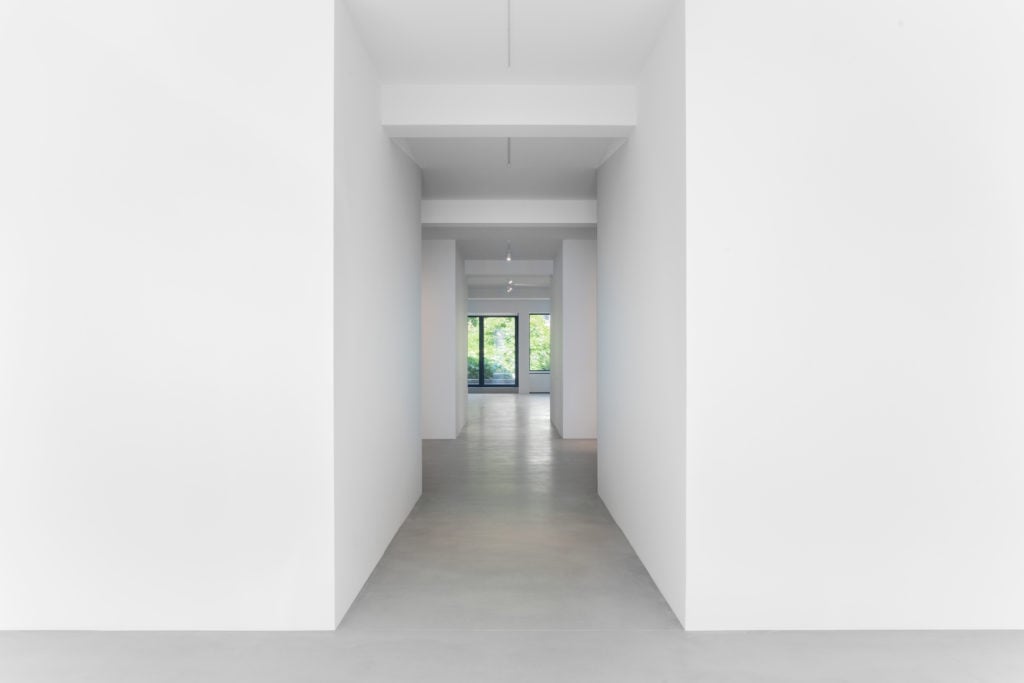
Xavier Hufkens’s new location at 44 rue Van Eyck in Brussels opens June 18. Photo: HV-Studio, Brussels. Courtesy: Xavier Hufkens, Brussels.
How has the reopening of the Brussels art scene gone?
Obviously, horrible things happened and people have died. We must come out having learned something from this. It’s great to have people in the gallery again. It is different, of course, as we can [only] allow one person wearing a mask per ten square meters [100 square feet]. But seeing people with masks back in the gallery is so much better than having it shut down. We are so happy to be opening again.
It’s quite unusual that you’re opening a space during such a difficult time. Has that been stressful?
I don’t want to be stopped by a pandemic. My gallery is 33 years old, so I’ve seen moments where it was really good, and we have also been through times where it was more difficult. But if you believe in what you do, if you believe in the artists you work with, the people in your gallery, the collectors, and the public, you just want to continue. A gallery is a destination, it has a real function both physically and intellectually. We see a lot of these online viewing rooms these days, but I really think that the physical interaction with the work and the intellectual interaction between people at the galleries are important. I don’t want this to stop. It’s going to be different, because obviously openings for the moment are not permitted as we envisioned them. But the gallery is open and people can visit the show.
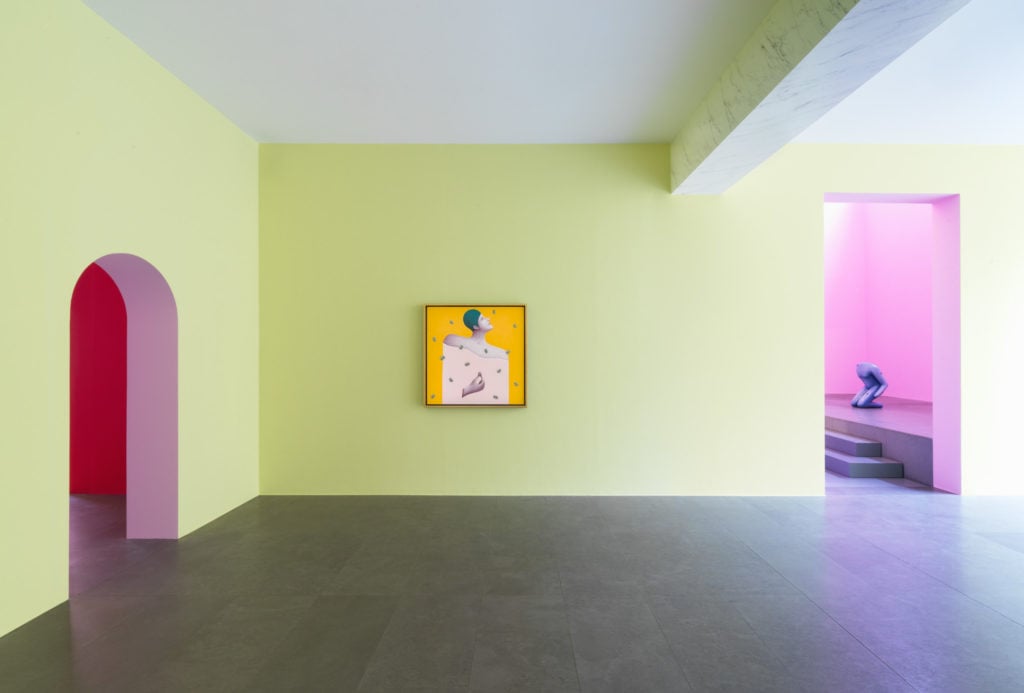
Nicolas Party in Grotto ( November 15–December 21 2019), 6 rue St-Georges. Photo: Allard Bovenberg. Courtesy the artist and Xavier Hufkens, Brussels.
It’s interesting what you were saying about the importance of a brick-and-mortar gallery because, of course, this was already being called into question by all these online viewing rooms, and I know you participated in a few of them. What’s your prediction? Do you think that this will catch on with collectors or that they’ll still need to go to walk around the fairs?
The online viewing rooms have been very nice and very helpful at that moment. It was the only way that we could basically be operational. [But] I really believe that art is a physical experience. Everything that you add to that is valuable, [but] at the end of the day, the place we all really want to be is at the gallery or museum in front of the picture or the sculpture. The rest are tools. They may be wonderful tools and we should embrace and use them, but that is what they are. Brick-and-mortar is necessary. We need places that have souls.
The coming two years will be very hard to predict. My feeling is that it is going to be some time until the physical interaction between all of us becomes normal again. Art fairs but also vernissages, gallery weekends, and so on, will be different than before, but they will remain important because these are places where you meet people from all over the world. I still think there’s a big future for the art fairs that really mattered. There were obviously too many, but people will still want to go to Art Basel and Frieze. I’m going again when they organize something. But for now we take it week by week.
Your upcoming show with Sterling Ruby is in June. He’s an artist who’s based in Los Angeles. Was it logistically complicated?
It was supposed to open in April, and of course, that was no longer possible. But changing the date was basically the only change we did. In terms of logistics, you just get used to adapting to situations. There is a slight chance Sterling will be able to make it, but we are hoping.
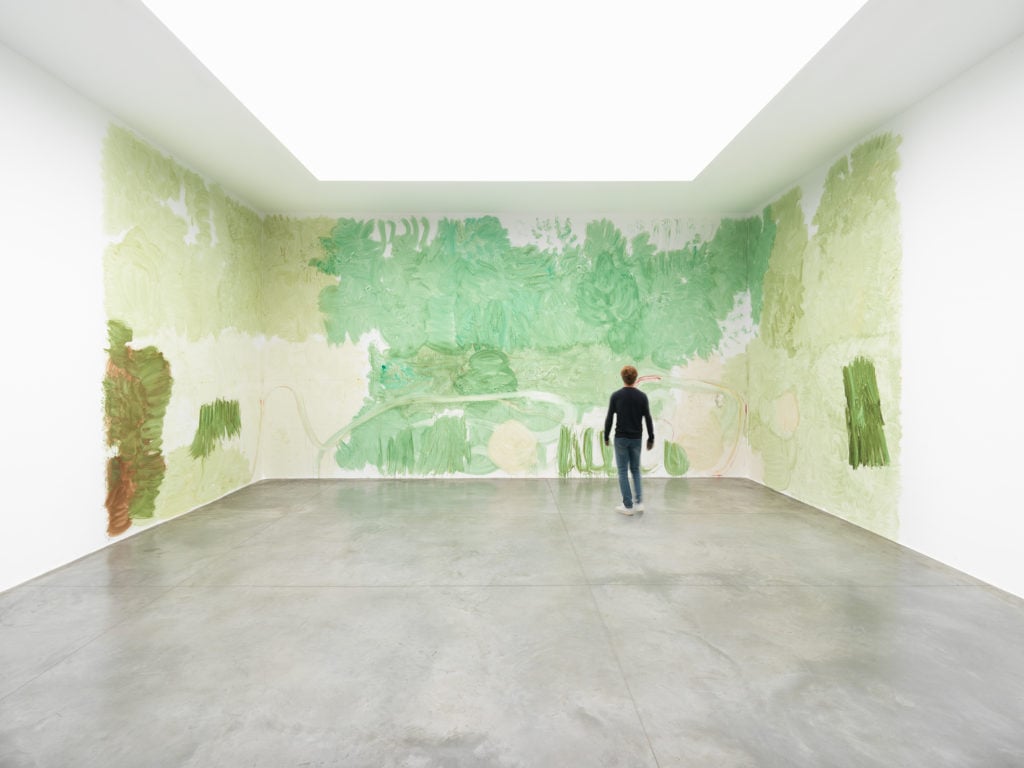
Zhang Enli (September 6–October 19, 2019), 6 rue St-Georges. Photo: Allard Bovenberg. Courtesy: the artist and Xavier Hufkens, Brussels.
Why did you expand within Brussels and not somewhere else? It must be sort of a blessing now, in a time where working locally seems to be the only way.
I always wanted to stay in the same place. Opening abroad would have been easy. It is something we thought about. It may be strange to say it, but a lot of wonderful places, like particular shops that you could only find in Paris or in London, once they expanded abroad, they were turned into global luxury brands. I do not aspire to evolve in that direction and would like for my gallery to stand for something else. I want for my visitors to feel the person behind the gallery as well as the art. It’s about imagination and emotion, it needs to have a soul.
I am interested in prioritizing quality over anything else. My name is above the gallery and I want to be there. I know that this may sound old-fashioned, but I always felt that this was important. I know for myself that I can guarantee that quality if I am there and I can control it. I want to be my gallery.
I am opening another space in 2022 in Brussels. It is a really interesting project. When I built the first space in 1991, it was with Paul Robbrecht and I am going to work with him again 30 years later. It is not a fourth location, but I am expanding the historical gallery.
What would you advise younger galleries in this precarious moment?
You have to do what you do out of passion. I think you can be a gallery at every level, but passion needs to run through them. There is no formula otherwise. There will always be space for galleries and artists. Stay loyal, stay close to your artists. Offer quality, create opportunities for your artists, and take risks. Try to be a physical and intellectual destination with a real function.






